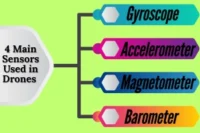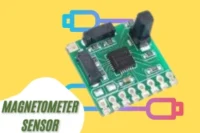The Magic Behind Every FPV Camera in the Air
Published: 26 Jul 2025
Want to truly understand how an FPV camera works? You’re in the right place. This guide will explain the full process, from what happens inside the camera to how the live video reaches your goggles. We’ll keep things simple and use real-world examples so you don’t get lost in tech terms. Whether you’re new to FPV drones or just curious, you’ll walk away knowing how an FPV camera works and why it’s such a game-changer for drone pilots. Stick around, and we’ll help you see exactly what your drone sees—clearly and in real time.
What Is an FPV Camera
An FPV camera is a small camera mounted on a drone that sends live video to your goggles or screen, letting you see what the drone sees while it flies.
FPV stands for First Person View : It means you are flying the drone as if you are sitting inside it, using a live video feed.
It’s different from regular drone cameras : Standard cameras record video to a memory card for later viewing. FPV cameras send live video instantly, so you can react in real time.
It’s a key part of any FPV setup : The FPV camera works with the transmitter, antennas, and your goggles to give you a real-time flying experience.
Why Use an FPV Camera in Drones
FPV cameras give you a whole new way to fly. Instead of just watching your drone from the ground, you see everything from the drone’s view—live and in motion.
You get a real-time flying experience : With an FPV camera, you see exactly what the drone sees, as it happens. This makes flying feel more natural and exciting—like you’re sitting inside the drone.
You have better control while flying : For racing, freestyle tricks, or flying through tight spaces, FPV helps you react faster. Since there’s no delay, you can make quick moves with confidence.
You can explore hard-to-reach places : FPV cameras help you safely fly into areas that are out of sight—like under bridges, through trees, or inside buildings—without crashing.
It connects you to the flight : Seeing the world from the drone’s point of view makes the experience immersive. You’re not just flying a machine—you’re part of the journey.
How the FPV Camera Captures Video
An FPV camera works like a live set of eyes for your drone. It doesn’t record for later—it captures and sends video instantly while flying.
Camera captures drone’s front view : As the drone moves, the FPV camera captures everything in real time—trees, buildings, turns, and sky. It doesn’t save the video; it sends it straight to your goggles or screen.
Key parts that make it work : The lens focuses the image, the sensor picks up light and turns it into a video signal, and the field of view decides how wide or narrow the camera sees. A wider view helps pilots spot more around them.
Understanding frame rate and resolution : The frame rate (like 30 or 60 FPS) shows how smooth the video looks. More frames mean smoother flying. The resolution (like 720p or 1080p) tells you how clear the image is. In FPV, fast response is more important than super-sharp video.
Live feed, not stored footage : FPV cameras don’t save the video—they stream it instantly. That way, you can react fast and fly smoothly without waiting for any delay.
How Video Travels from Drone to Goggles
Once the FPV camera captures the view, the live video needs to reach your goggles fast and without lag. This happens through a wireless signal.
Role of the video transmitter (VTX) : The VTX is a small device on the drone that sends the video signal wirelessly. It takes the footage from the camera and pushes it out through radio waves so your goggles can catch it.
Function of antennas : Both the drone and the goggles have antennas. On the drone, the antenna helps the VTX send the signal out. On your goggles, another antenna receives that signal. The quality of your feed depends a lot on how well both antennas work together.
Step-by-step journey : First, the camera captures the view. Then, it sends the video to the VTX. The VTX broadcasts the signal into the air. Finally, your goggles receive the signal and display the live video.
Why signal strength matters : A weak signal can cause lag, fuzz, or screen freeze. That’s why good antennas and proper setup are key for smooth FPV flying.
What Happens in the Goggles or Monitor
Once your drone sends the video through the air, your goggles or screen catch the signal and turn it into a live view.
How the receiver gets the video signal : Inside your FPV goggles (or monitor), there’s a built-in receiver. It picks up the radio signal sent by the drone’s VTX and converts it back into video. Think of it like catching a live TV broadcast—but just for your drone.
How the feed is displayed in real time : The video shows up instantly on the screen inside your goggles. There’s no waiting or loading. This real-time feed helps you fly smoothly and react quickly to whatever your drone sees.
Types of FPV goggles and basic setup : There are box-style goggles (larger with one big screen) and slim, binocular-style goggles (smaller with two tiny screens). Some goggles are analog, some digital. Most come with built-in receivers, but advanced users sometimes add external modules for better range.
Better clarity, less distractions : Goggles block out distractions and give you full focus. It feels like you are inside the drone—great for racing or exploring tight spots.
Analog vs. Digital FPV Systems

Common FPV Camera Issues and Fixes
Even the best FPV setup can run into problems now and then. Here are some common issues pilots face—and simple ways to fix them:
Blurry or static-filled video : This often comes from a loose lens, smudged camera glass, or low light. Gently clean the lens and make sure it’s screwed in tightly. Adjust the focus if needed.
Signal drops or lag during flight : Weak or inconsistent video usually means your VTX power is too low, or there’s interference from buildings, trees, or other signals nearby. Also, check your antennas for damage or poor placement.
Goggles show no video feed : Double-check that both your VTX and goggles are on the same channel and frequency. Loose wires or poor solder joints can also block the signal.
Quick tips for smoother flying
• Do a signal test before takeoff
• Keep firmware updated
• Secure all cables and connections
• Use higher power settings for long-range flights (if allowed)
How to Pick the Right FPV Camera
Choosing the right FPV camera can make a big difference in how well you fly and how much you enjoy it.
Look at the key specs: resolution, latency, and lens size
A higher resolution gives a clearer image. Low latency (less delay) is better for fast flying. Lens size affects how wide the camera sees—a wider lens helps with awareness in tight spaces.
Match the camera to your flying style
For freestyle, pick a camera with good dynamic range so it handles light changes well. For racing, go for ultra-low latency. If you’re into long-range, focus on sharp image quality and solid signal performance.
Go simple if you’re just starting out
Beginners should pick a durable, easy-to-use camera—like Runcam Nano or Caddx Ant. These offer decent video, are budget-friendly, and don’t need complex setup.
Check compatibility with your gear
Make sure the camera fits your drone frame and works with your VTX and goggles—especially if you are mixing analog and digital parts.
Conclusion
Now you know how an FPV camera works—from capturing live video to sending it through the air and displaying it in your goggles. We also covered the difference between analog and digital systems, common issues and how to fix them, and tips for choosing the right camera based on your flying style.





